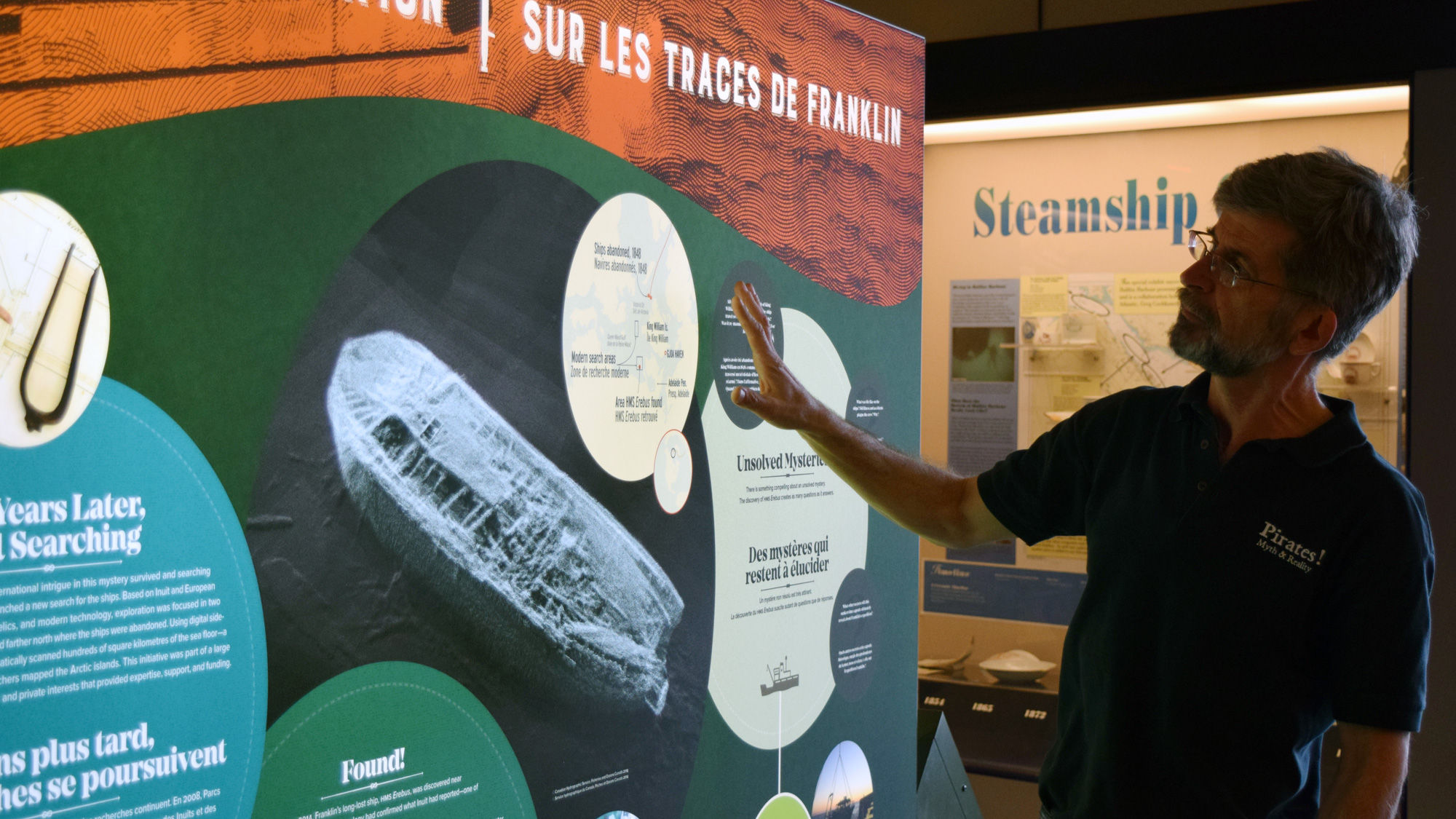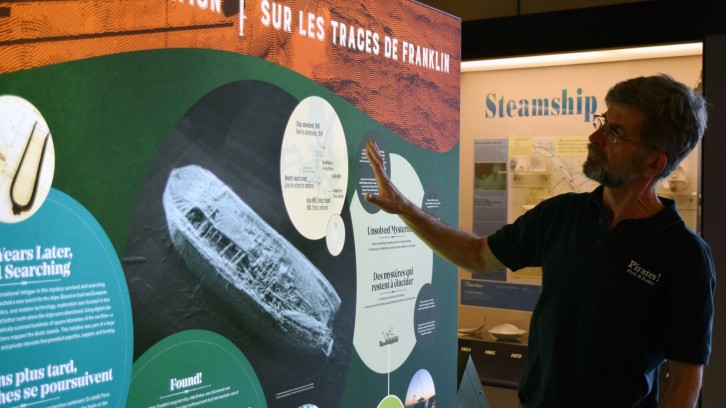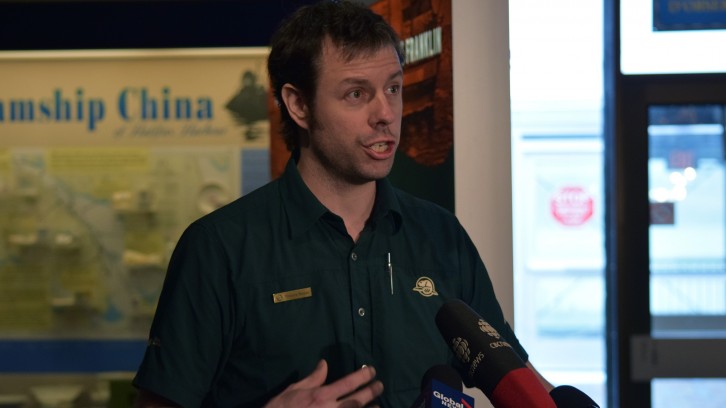History
Franklin expedition exhibit opens at Maritime Museum
New display showcases history of failed expedition, discovery of wrecked ship

caption
Gerry Lunn, curator of exhibitions at the Maritime Museum of the Atlantic, explains components of the new display.
caption
Gerry Lunn, curator of exhibitions at the Maritime Museum of the Atlantic, explains components of the new display.An exhibit detailing the history of the Sir John Franklin expedition and the discovery of HMS Erebus is now on display at the Maritime Museum of the Atlantic.
The display, which is part of a series of exhibits across Canada, was unveiled Wednesday.
In 1845, the Franklin expedition left England and set out to travel the Northwest Passage, but the 129 men aboard the two ships, Erebus and HMS Terror, never returned. Over the years, many expeditions unsuccessfully tried to find the wrecked ships.
In 2014, a large Canadian expedition located Erebus, in the Queen Maud Gulf off King William Island in the Arctic.
Thierry Boyer is an underwater archaeologist with Parks Canada. He spoke at the launch of the exhibit, calling the discovery of Erebus “one of Canada’s most important archeological finds.”
The display shows how sonar technology was used to scan for the shipwreck.

caption
Thierry Boyer, an underwater archeologist with Parks Canada, speaks at the opening of the Franklin expedition exhibit.Boyer was part of the team that searched for the wrecked ships, but wasn’t on the boat that found Erebus.
“My colleague who found it refers to it as finding the Stanley Cup, but the only difference is that there’s only one given – ever,” he said.
Gerry Lunn, curator of exhibitions at the museum, is very excited about the new display.
“Can you imagine being on the ship and the screen is assembling this and all of a sudden you see this beautiful huge shipwreck?”
He hopes the display will convey the excitement of the discovery.
Grade 8 students from Oxford School were at the museum for the unveiling of the display.
“For one of those students,” Lunn said, “maybe it’ll cause something to make them think, I would love to be involved in that kind of future, I’d love to do that kind of work.”
The exhibit will be on display for three years.
